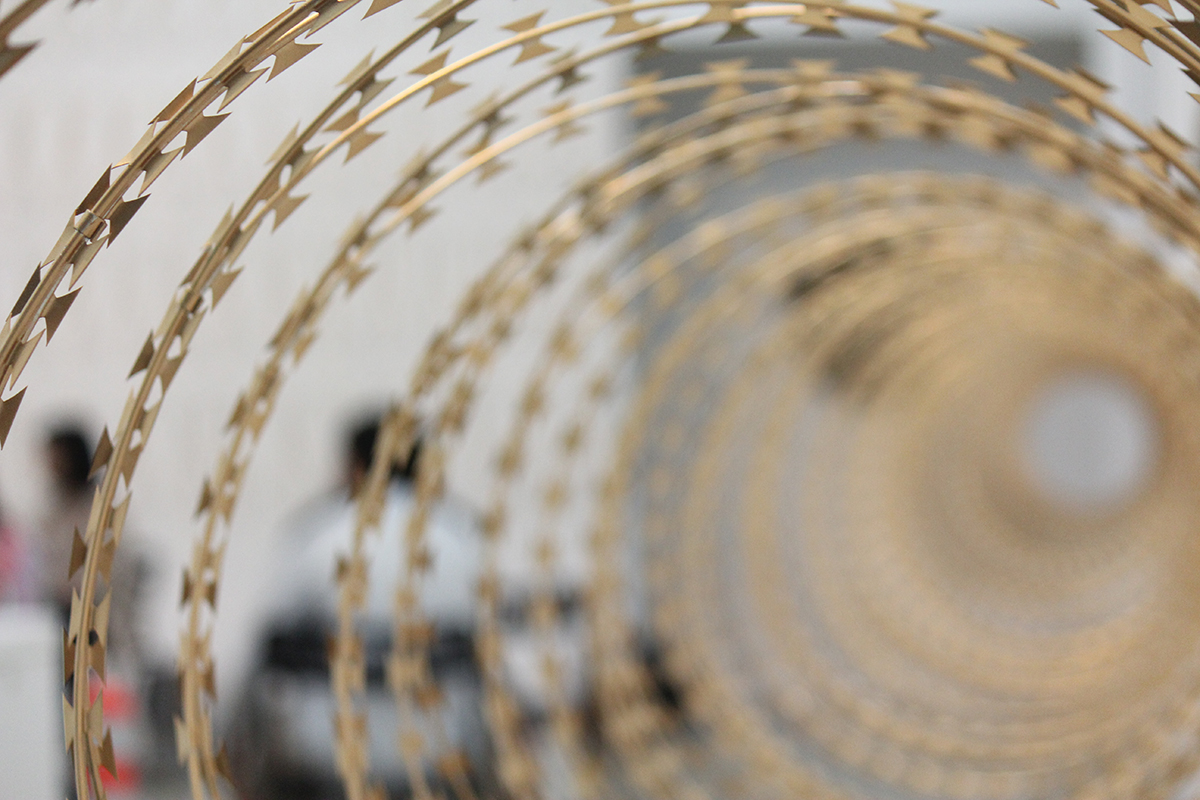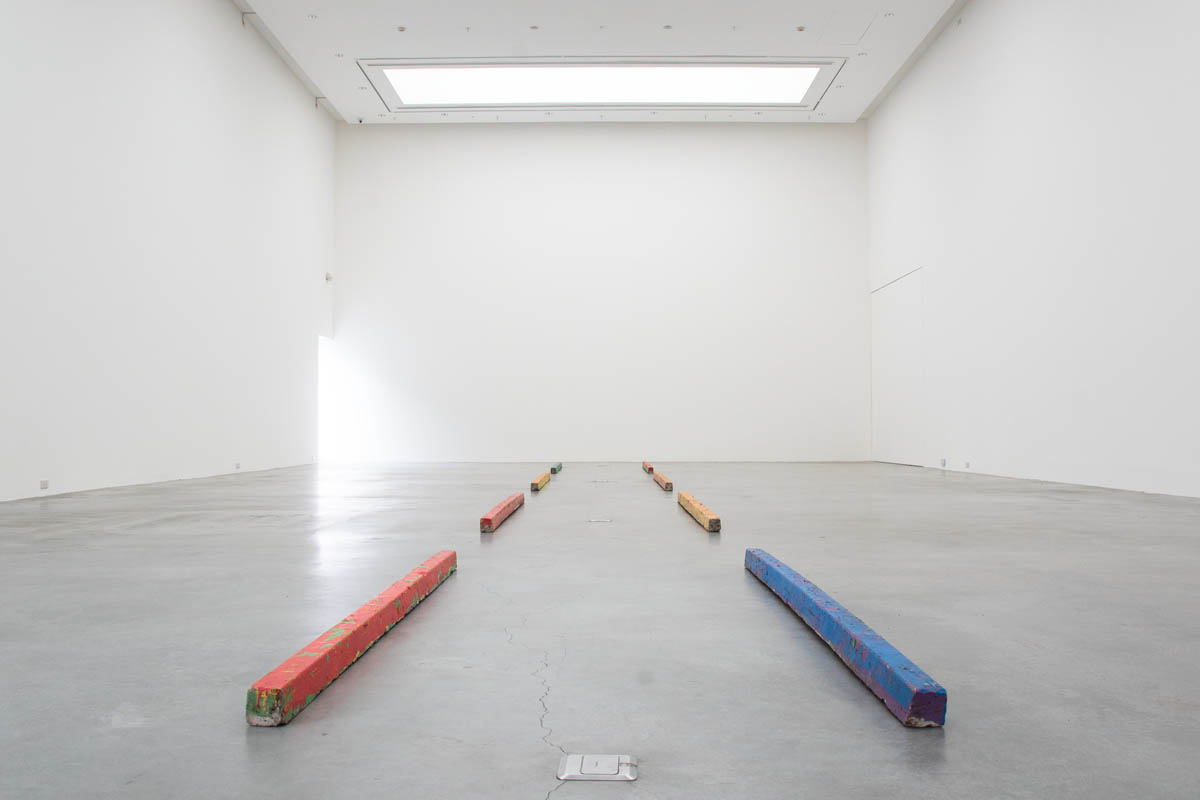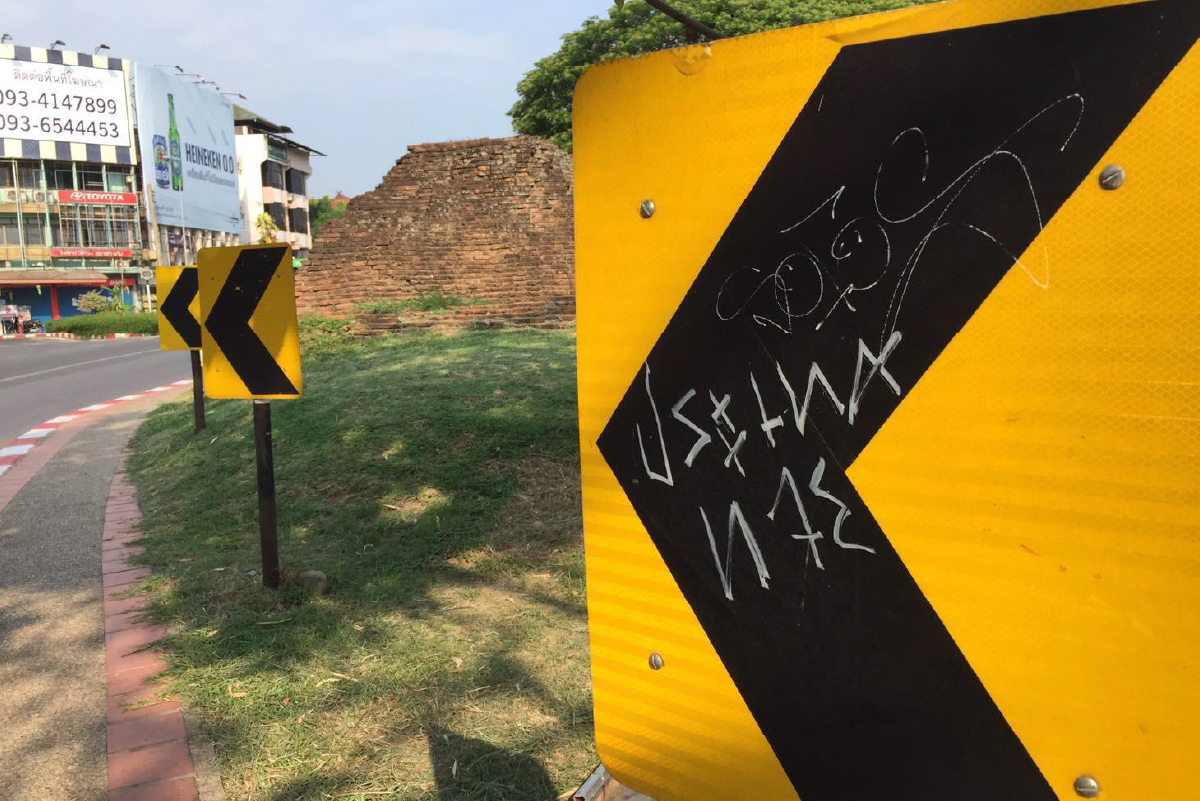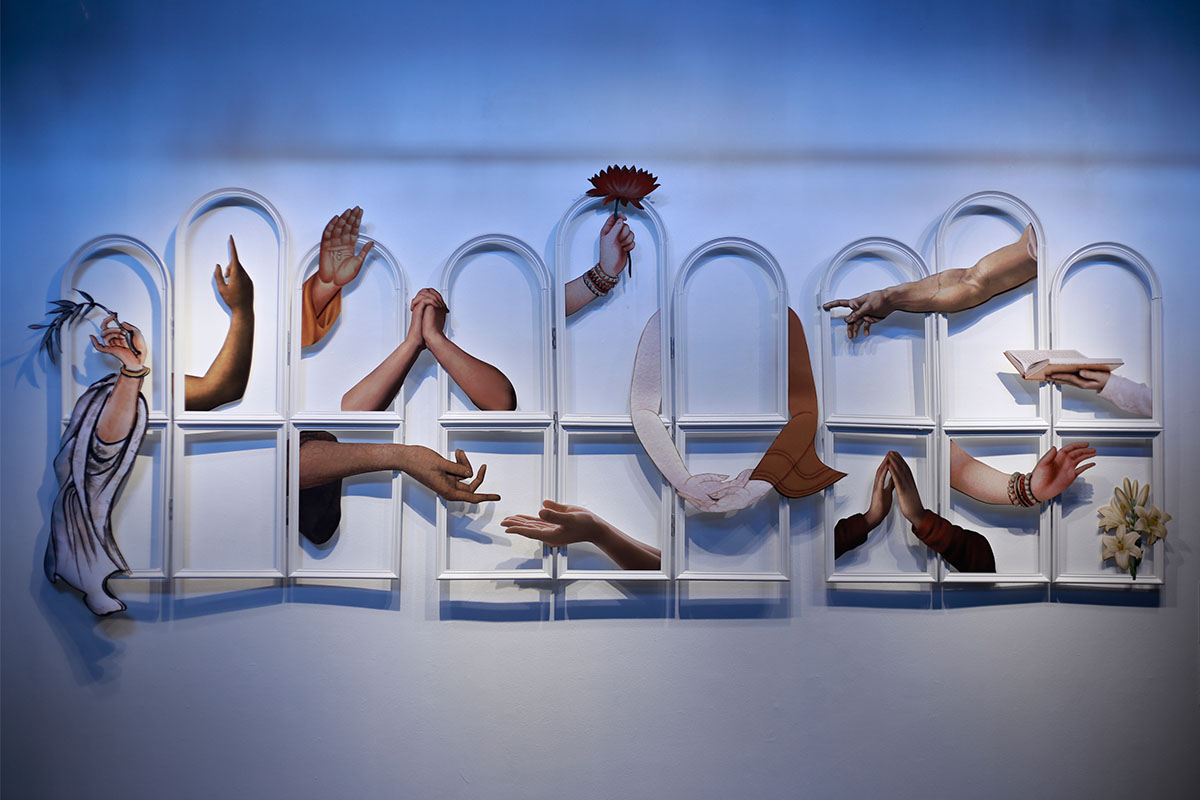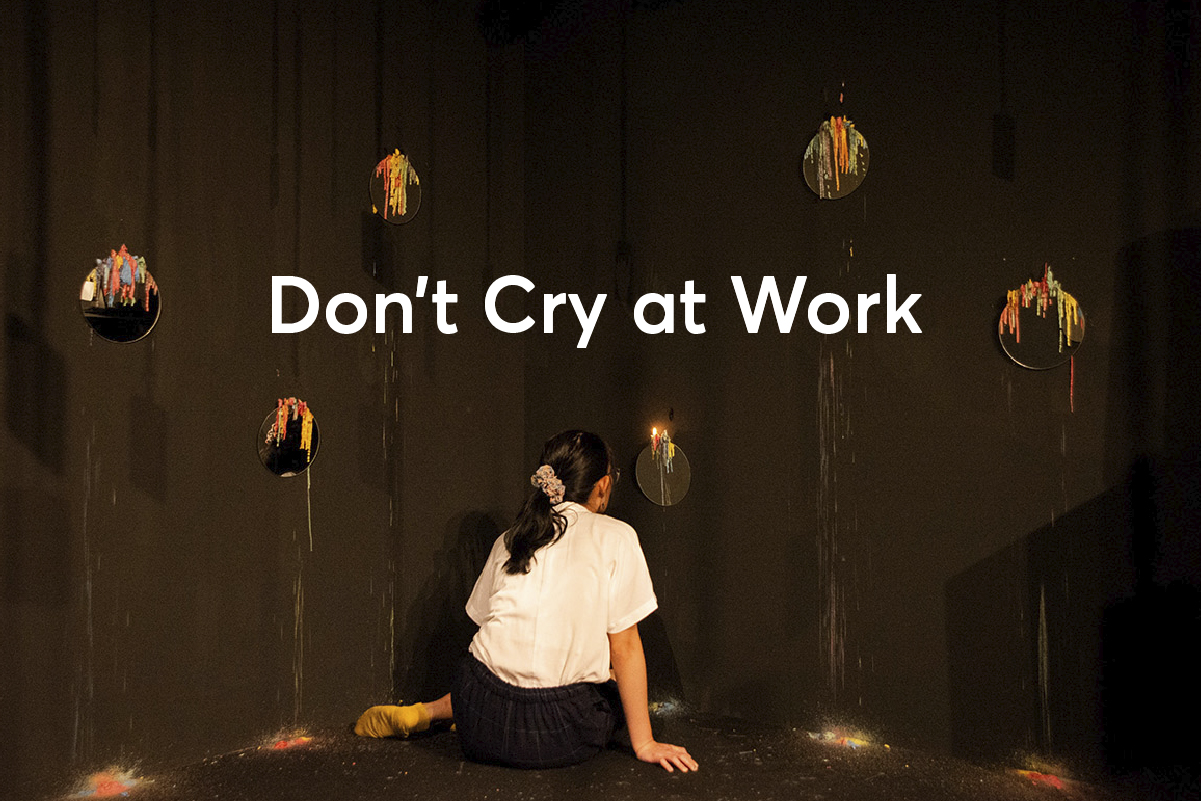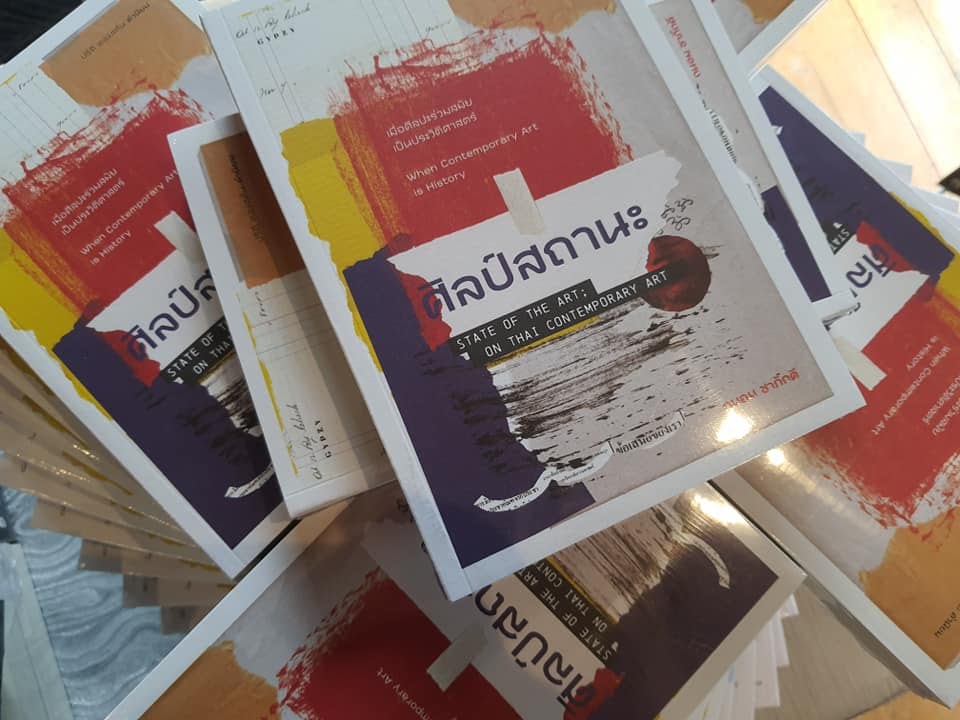ผู้หญิงจะต้องเปลือยกายอย่างเดียวเลยหรือ จึงจะได้เข้าไปอยู่ในพิพิธภัณฑ์ศิลปะ?
นี่เป็นจดหมายเปิดผนึกถึง MOCA Bangkok ในกรณีนิทรรศการใหม่ล่าสุด ‘ศิลปะรูปเปลือย’ ซึ่งได้เปิดนิทรรศการไปเมื่อวันเสาร์ที่ผ่านมา (1 สิงหาคม 2563)
เรียน คณะผู้จัดงานนิทรรศการ ‘ศิลปะรูปเปลือย’ และคณะกรรมการ ภัณฑารักษ์แห่ง MOCA Bangkok
จดหมายฉบับนี้ต้องการเพรียกถึงความขัดแย้งระหว่างจำนวนศิลปินและภาพที่ปรากฏบนผลงานศิลปะที่จัดแสดง ในจำนวนศิลปินทั้ง 26 รายนั้น ไม่มีศิลปินหญิง หรือแม้แต่มีศิลปินคนใดประกาศตนว่าเป็นศิลปินในกลุ่มเพศทางเลือก (LGBTQ) เลย หากแต่ผลงานที่แสดงทุกชิ้น เป็นภาพเปลือยของผู้หญิง ทั้งที่ในประเทศไทยเองก็มีศิลปินหญิง รวมไปถึงศิลปินกลุ่มเพศทางเลือก เช่น พินรี สัณฑ์พิทักษ์, อารยา ราษฎร์จําเริญสุข, อริญชย์ รุ่งแจ้ง, ยุรี เกนสาคู และ ปริณต คุณากรวงศ์ ที่สร้างผลงานเปลือยอันมีคุณภาพไม่แพ้ผลงานที่คัดเลือกมาแสดงมากมาย
ภาพหญิงสาวปลดเปลื้องอาภรณ์ เปลือยร่างต่อศิลปินหนุ่มให้สรรค์สร้างภาพ ร่างกายสดสวยงดงามได้รูปของเธอถูกนำเสนอต่อสาธารณชนให้ได้ประจักษ์โดยศิลปินชาย นักสะสมชาย และผู้ชมส่วนใหญ่ที่เป็นชาย สายตาของชายที่มองดูหญิงสาวเปลือย (male gaze) เป็นความคลาสสิกที่ศิลปินสร้างผลงานมาตั้งแต่สมัยกรีก-โรมัน ผลงานศิลปะที่นำเสนอหญิงสาวเปลือยกายมีมากมายในพิพิธภัณฑ์ที่เก็บผลงานเพื่อศึกษาอดีต เช่นเดียวกับนิทรรศการภาพเปลือยครั้งนี้ ช่างเป็นตลกร้ายเหลือเกินที่ผลงานนู้ดส่วนมากมิได้ถูกสร้างโดยเพศที่เปลือยร่างบนผืนผ้าใบ
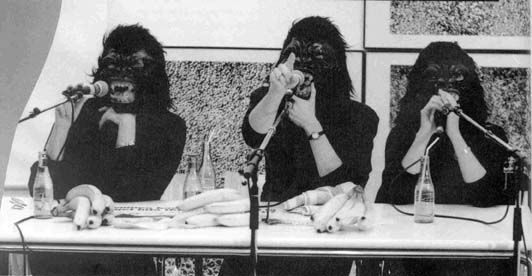
ประเด็นนี้มิใช่ประเด็นใหม่แต่อย่างใด เพราะกลุ่ม Guerrilla Girls อันประกอบด้วยศิลปินหญิงและคนทำงานในวงการศิลปะผู้ไม่ประสงค์เผยนาม ได้ออกมาทักท้วงเรื่องความไม่เท่าเทียมในวงการศิลปะซึ่งมีสัดส่วนศิลปินชายต่อศิลปินหญิงมากกว่ากันหลายเท่าตัวตั้งแต่ปี ค.ศ. 1985 แล้ว โดยพวกเธอได้ตั้งคำถามผ่านโปสเตอร์ หนังสือ บิลบอร์ด รวมทั้งการปรากฏตัวแบบกองโจรว่า “ผู้หญิงจะต้องเปลือยกายอย่างเดียวเลยหรือ จึงจะได้เข้าไปอยู่ในพิพิธภัณฑ์ศิลปะ?” (Do women have to be naked to get into the Met. Museum?) ซึ่งในกรณีนี้ Guerrilla Girls ได้อ้างอิงถึงพิพิธภัณฑ์ศิลปะเมโทรโพลิแทน (Metropolitan Museum of Art) โดยยกจำนวนศิลปินหญิงว่ามีไม่ถึง 5 เปอร์เซ็นต์ ในขณะที่รูปนู้ด 85 เปอร์เซ็นต์ กลับเป็นรูปหญิงเปลือย คำถามนี้เป็นคำถามที่เถรตรงและมิต้องใช้สิ่งใดในการตีความ เป็นการหยิบยกความจริงอันปรากฏจากตัวเลขซึ่งถูกบันทึกไว้ ความไม่เท่าเทียมอย่างเห็นได้ชัดนี้มิได้เกิดขึ้นในพิพิธภัณฑ์เมโทรโพลิแทนเพียงแห่งเดียว แต่รวมไปถึงพิพิธภัณฑ์และสถาบันทางศิลปะชั้นนำอื่น แม้แต่ MOCA เอง ที่มีศิลปินหญิงเพียง 5 คนจากศิลปินทั้งหมดที่มีผลงานจัดแสดงในพิพิธภัณฑ์ ไปจนถึงนิทรรศการภาพเปลือยครั้งนี้ที่คัดเลือกเพียงผลงานของศิลปินชายมาจัดแสดง
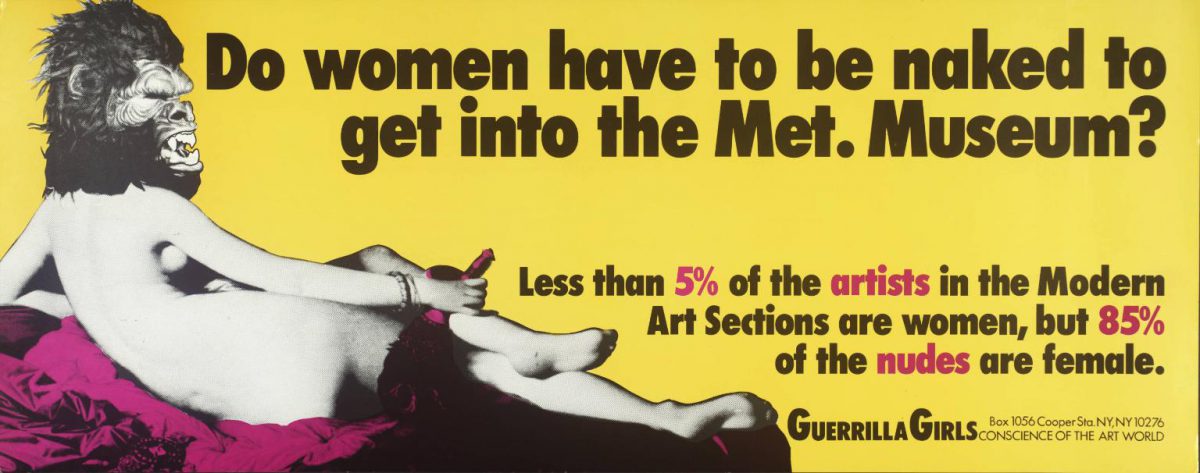
หากปัญหาความเท่าเทียมทางเพศและการมองผู้หญิงเป็นวัตถุมิใช่ประเด็นใหม่แล้ว ทำไม MOCA ซึ่งใช้ชื่อว่าเป็นพิพิธภัณฑ์ศิลปะร่วมสมัย จึงยังจัดแสดงผลงานที่ตอกย้ำความคิดล้าหลังเช่นนี้อยู่อีก เพราะเมื่อพิจารณาจากบริบทร่วมสมัย ซึ่งเน้นย้ำประเด็นเรื่องความเท่าเทียมทางเพศในสถานการณ์ปัจจุบันแล้ว รูปแบบการจัดนิทรรศการภาพเปลือยครั้งนี้เผยให้เห็นมุมมองใหม่ต่อเรือนร่าง ความเป็นมนุษย์ และศิลปะ อย่างไรบ้าง นอกเสียจากการนำเสนอเรือนร่างของหญิงสาวในฐานะวัตถุในการจ้องมองไปจนถึงวัตถุทางเพศ
จากวัตถุประสงค์ของนิทรรศการซึ่งกล่าวว่า “ศิลปะรูปเปลือยอยู่คู่กับการดำรงชีวิตมนุษย์มายาวนาน เป็นที่น่าเสียดายอย่างมากที่ผลงานหลายชิ้นถูกเก็บซ่อน หรือเผาทำลายด้วยความไม่รู้ ท่ามกลางบริบทสังคมที่ขาดความรู้ความเข้าใจด้านศิลปวัฒนธรรมซึ่งแปรผันตามวิถีชีวิตของผู้คน […]” แนวคิดในการจัดแสดงภาพเปลือยในนิทรรศการนี้มีความแตกต่างจากการจัดแสดงภาพเปลือยในอดีตอย่างไร สร้างความรู้ความเข้าใจต่อสภาพการณ์ในโลกปัจจุบันอย่างไร
หาก “นิทรรศการศิลปะรูปเปลือยครั้งนี้มีความมุ่งหมายที่จะสะท้อนให้เห็นความหลากหลายในการสร้างสรรค์ผลงานศิลปะ ซึ่งอาศัยชั้นเชิงการวาดภาพและการปั้นรูป โดย 26 ศิลปินชั้นนำของไทย แต่ละท่านได้นำกายวิภาคอันเปลือยเปล่ามาแสดงออกภายใต้ความรู้สึกนึกคิดเฉพาะตน มีกลวิธีในการสร้างสรรค์และชั้นเชิงการแสดงออกอย่างมีเอกลักษณ์โดดเด่น สอดแทรกเรื่องราวสำคัญในผลงานสร้างสรรค์…” ดังที่กล่าวแล้ว เหตุใดนิทรรศการภาพเปลือยจึงนำเสนอมุมมองของชาย (male gaze) เพียงอย่างเดียว และขาดมุมมองของศิลปินเพศหญิง (female gaze) หรือแม้แต่เพศทางเลือก (queer gaze)
เหตุใด MOCA จึงจำกัดการนำเสนออยู่เพียงการเป็นรูปลักษณ์ของแบบ แต่ละเลยประเด็นใหญ่กว่า นั่นคือบริบททางสังคมที่ภาพนั้นได้เกิดขึ้นและปัญหาความไม่เท่าเทียมทางเพศในสังคมนั้น รวมถึงการแสดงตัวตนของเพศหญิงผู้เป็นต้นแบบที่ถูกนำเสนอในผลงานเหล่านี้ หรือผลงานเหล่านี้เป็นเพียงภาพแทนของพวกเธอผู้ไร้ปากเสียงใดๆ ที่ศิลปินพึงพอใจจะนำเสนอ และภัณฑารักษ์เองก็พึงพอใจจะจัดแสดงอย่างปิดหูปิดตากับปัญหาเหล่านี้
หากพิจารณาถึงชิ้นงาน จริงอยู่ที่นิทรรศการมีผลงานที่นำเสนอร่างกายของผู้หญิงในการพินิจคุณค่าทางร่างกายอย่างหลากหลาย เช่นร่างกายของหญิงสูงวัย แต่ผลงานที่นำเสนอเพศหญิงในฐานะวัตถุทางเพศนั้นก็มีในจำนวนไม่ด้อยไปกว่ากัน ผลงานภาพนั้นมิได้มีความผิดบาปในการนำเสนอ เพราะศิลปะเป็นพื้นที่เปิดกว้างในการแสดงออก หากแต่การละเลยความไม่เท่าเทียมและการถูกกดขี่ของเพศหญิง (โดยเฉพาะศิลปินหญิงในประวัติศาสตร์รวมทั้งเพศทางเลือกอื่นๆ) การกล่าวว่าเป็น “นิทรรศการที่มุ่งสะท้อนให้เห็นความหลากหลายในการสร้างสรรค์และเกิดความรู้ความเข้าใจในศิลปะรูปเปลือย” และต้องการขจัด “เส้นบาง ๆ ขีดกั้น คุณค่าทางความงามและความไม่รู้อยู่ในทุกมุมโลก” แต่การมองไม่เห็นถึงปัญหาของภาพเปลือยในประวัติศาสตร์ศิลปะเลยแม้แต่น้อยยิ่งตอกย้ำ ‘ความไม่รู้’ ของผู้จัดนิทรรศการ ตลอดจนกระทั่งมุมมองด้านความงามที่ไม่เปิดกว้างต่อความเป็นไปได้ของศิลปะที่สร้างโดยศิลปินเพศอื่นเลย
หากศิลปะมิได้มีค่าเพียงของประดับ เช่นนั้นแล้วหน้าที่ของพิพิธภัณฑ์จึงต้องเป็นมากกว่าผนังแขวนภาพ
ในกรณีที่ MOCA มิได้เป็นพิพิธภัณฑ์ อาจไม่จำเป็นต้องวิจารณ์ต่อการจัดนิทรรศการภาพเปลือยครั้งนี้ หากแต่ในฐานะพิพิธภัณฑ์ จุดประสงค์ของความเป็น ‘พิพิธภัณฑ์’ ของ MOCA ต่อการจัดแสดงนิทรรศการครั้งนี้คือสิ่งใด
อ้างอิงความหมายของพิพิธภัณฑ์ของ ICOM (International Council of Museum) บัญญัติเมื่อเดือนกรกฎาคม ค.ศ. 2019 ซึ่งกล่าวว่า “พิพิธภัณฑ์เป็นสถาบันถาวรที่ไม่หวังผลกำไรที่รับใช้และพัฒนาสังคม เปิดให้ต่อสาธารณะ ซึ่งครอบครอง อนุรักษ์ ค้นคว้า สื่อสาร และจัดแสดงมรดกทั้งที่จับต้องได้และไม่ได้ของมนุษยชาติและสิ่งที่แวดล้อมมนุษยชาติด้วยจุดประสงค์ในการศึกษา เรียนรู้ และความเพลิดเพลิน”1
เมื่อ MOCA มีความตั้งใจจะเป็นพิพิธภัณฑ์ศิลปะแล้ว เพราะเหตุใดจึงสนับสนุนผลงานที่เป็นไปตามรสนิยมเท่านั้น นิทรรศการภาพเปลือยครั้งนี้มีคุณค่าต่อสังคมในเชิงการศึกษาเรียนรู้และต่อยอดในด้านใดหรือไม่ หรือเน้นเพียงเพื่อความเพลิดเพลินและตอกย้ำรสนิยมของผู้อุปถัมภ์และเจ้าของพิพิธภัณฑ์
นอกจากด้านเทคนิคและภาพลักษณ์ (visual representation) แล้ว สิ่งที่นักศึกษาหรือผู้สนใจในศิลปะสามารถศึกษา ในเชิงเนื้อหาจากผลงานที่ได้รับคัดเลือกมาจัดแสดงเหล่านี้มีอะไรบ้าง ข้อถกเถียงในประเด็นการเปลือย หรือประเด็นภาพลักษณ์ของเรือนร่าง ต่างจากการวิพากษ์ที่มีอยู่แล้วในอดีตอย่างไร และเชื่อมโยงต่อชีวิตปัจจุบันได้อย่างไร
ในขณะที่พิพิธภัณฑ์และสถาบันทางศิลปะร่วมสมัยทั่วโลกต่างตื่นตัวกับประเด็นทางเพศนี้ โดยได้ปรับเปลี่ยนสัดส่วนการแสดงผลงานให้มีศิลปินหญิง รวมทั้งภัณฑารักษ์หญิง ไปจนถึงพนักงานหญิงและเพศทางเลือกมากขึ้นในเวลาไม่กี่สิบปีที่ผ่านมา สถาบันศิลปะร่วมสมัยชั้นนำของกรุงเทพฯ กลับนำเสนอสิ่งที่เป็นไปในทางตรงกันข้าม เมื่ออ้างอิงบทสัมภาษณ์ของ อาแมนดา เดอ ลา การ์ซา (Amanda de la Garza) ผู้อำนวยการฝ่ายทัศนศิลป์ของ MUAC (University Museum of Contemporary Art) และผู้บริหาร MUAC (University Museum of Contemporary Art) ซึ่งกล่าวว่า
“พิพิธภัณฑ์ทั้งหลายต้องไม่ลืมเด็ดขาดว่าพวกเขาเป็นส่วนหนึ่งของสังคม เช่นเดียวกับศิลปะ หมายความได้ว่า ในฐานะการเป็นพื้นที่ทางสังคม พิพิธภัณฑ์ต่างถูกผูกสัมพันธ์ด้วยโครงข่ายอำนาจ ไปจนถึงโครงสร้างทางสังคมที่ทั้งสะท้อนและตีความหมายดังที่ปรากฏในพื้นที่ทางศิลปะด้วย มิเช่นนั้นแล้ว พิพิธภัณฑ์จะยังคงจำกัดความเป็นศิลปะได้ไม่ไกลเกินกว่าสิ่งที่ปรากฏในศตวรรษที่ 19 และพิพิธภัณฑ์เองก็จะพบบทสรุปไม่ต่างกับพิพิธภัณฑ์ในยุคนั้น เพราะเหตุนี้ พิพิธภัณฑ์ในทุกวันนี้จึงควรวิพากษ์ถึงการเป็นรากฐานและหน้าที่ในสังคม”2
ยังกล่าวได้อยู่หรือไม่ ว่าศิลปะที่จัดแสดงในนิทรรศการนี้ ผ่านการวิเคราะห์ ค้นคว้า ศึกษามาแล้วว่าร่วมสมัย เหมาะสมจะได้รับการจัดแสดงในพิพิธภัณฑ์อย่างแท้จริง
หากจะยกตัวอย่างเปรียบเทียบแล้ว พิพิธภัณฑ์ศิลปะร่วมสมัยอื่นมีขั้นตอนการคัดเลือกนิทรรศการและผลงานในครอบครองอย่างพิถีพิถัน ละเอียดรอบคอบ ศึกษา ค้นคว้า และคิวเรทโดยอิงจากบริบททางประวัติศาสตร์และสังคม ทำให้ผลงานในครอบครองมีคุณค่าทั้งทางสุนทรียะและทางวิชาการ หากพิพิธภัณฑ์คัดเลือกโดยอ้างอิงรสนิยมของเจ้าของพิพิธภัณฑ์เพียงอย่างเดียว ศิลปินก็คงเป็นเพียงลูกจ้างรับวาดภาพ ผู้สร้างผลงานตามความชอบของนายจ้างอยู่ร่ำไป ศิลปะเองก็คงย่ำอยู่กับที่และหายไปตามกาลเวลา
สัดส่วนการจัดแสดงของศิลปินอาจเป็นปัญหาที่โผล่พ้นน้ำ แต่ก้อนน้ำแข็งอันมหึมาใต้น้ำนี้ซ่อนปัญหาเชิงโครงสร้าง ตั้งแต่เกณฑ์การคัดเลือกศิลปินและผลงานศิลปะ จุดประสงค์ในการจัดแสดง ความเห็นต่อสังคมปัจจุบัน รวมถึงความรู้ความเข้าใจในประวัติศาสตร์ศิลปะ ตลอดจนความเป็นศิลปะร่วมสมัยของคณะผู้จัดงาน หาก MOCA ไม่มีความเห็นใดหรือการเปลี่ยนแปลงใดในอนาคต MOCA ยังสมควรเรียกตนเองว่าเป็น ‘Museum of Contemporary Art’ ต่อ หรือควรตัดคำว่าร่วมสมัย (contemporary) ทิ้งไป แล้วบัญญัติว่าตนเองเป็น ‘Private Museum’ ไปเสียดีกว่าหรือไม่
ท้ายที่สุดแล้ว จดหมายเปิดผนึกฉบับนี้มิได้มีความประสงค์จะเรียกร้องให้ภัณฑารักษ์หรือคณะผู้จัดงานออกมาขอโทษหรือปลดงานแต่อย่างใด ศิลปะควรเป็นพื้นที่ในการแสดงออกเช่นเดียวกับที่ศิลปินควรมีสิทธิในการแสดงออก กระนั้นจดหมายเปิดผนึกฉบับนี้มีจุดประสงค์ในการวิจารณ์เพื่อให้ MOCA ที่ได้ชื่อว่าเป็นหนึ่งในเสาหลักของวงการศิลปะไทย รวมทั้งเป็นหนึ่งในพิพิธภัณฑ์ศิลปะที่ใหญ่ที่สุดในเอเชีย ได้ใคร่ครวญและไตร่ตรองถึงนิทรรศการอื่นที่จะมีในอนาคต การเป็นพิพิธภัณฑ์และการบริหารพิพิธภัณฑ์เป็นหน้าที่อันทรงเกียรติต่อมนุษยชาติและประชาชนในชาติ ผู้บริหารพิพิธภัณฑ์ควรมีความรับผิดชอบต่อเป้าหมายที่วางไว้ และปรับตัวตามการเปลี่ยนแปลงของสังคมตามกาลเวลา เพื่อการเป็นสถาบันศิลปะที่ไม่ได้เพียงแต่จะอุ้มชูศิลปะ แต่ยังพัฒนาศิลปะและศิลปิน ไปจนถึงให้ความรู้ความเข้าใจด้านศิลปะต่อสาธารณะ เพื่อให้มีความร่วมสมัยเทียบเทียมกับศิลปะสากล ดังนี้แล้วจึงจะมีความเท่าเทียมและเท่าทันยุคสมัย ดั่งเช่นชื่อที่สถาบัน Museum of Contemporary Art นั้นภาคภูมิใจนำเสนอ
ด้วยความเคารพ
พีรมณฑ์ ตุลวรรธนะ
นักเขียน, พนักงานศิลปะ และผู้มีใจรักในงานศิลป์
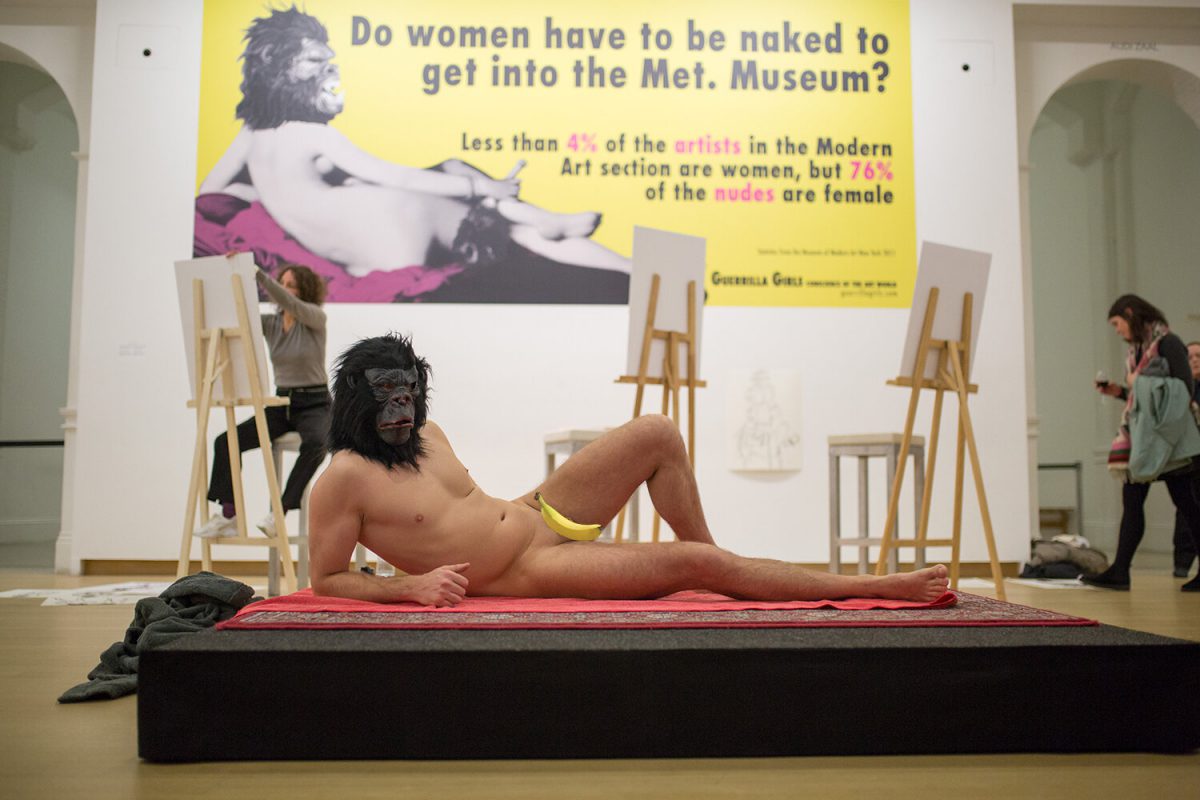
Do women have to be naked to get into the Museum of Contemporary Art?
This is an open letter to MOCA Bangkok in light of its newest exhibition ‘Nude Art’ that was recently opened this past Saturday.
Dear ‘Nude Art’ Exhibition Team and Board Curator of MOCA Bangkok,
I would like to address the obvious omission in the number of the artist to the content of the represented artworks. Within the 26 selected artists, there are no female artists, nor any artists who identify as LGBTQ at all. However, almost all artworks shown in the exhibition are female nudes. Even though there are many female artists, as well as queer artists, who work in nude art, such as Pinnaree Sanpitak, Araya Rasdjarmrearnsook, Yuree Kensaku, Arin Rungjang and Parinot Kunakornwong whose artworks hold no inferior quality to those exhibited at Nude Art exhibition. Why is it that only the selected ones are male?
The imagery of a lady stripped naked, showing her bare body for a male artist to paint her, her appealing figure is shown to the public to be viewed mainly by male artists, for male collectors, and most audiences who are also male. The male gaze looking at female nude is one classic trope that artists have created dated back since Greek and Roman era. Nude art piles up in museums that collect artworks to make light of the past, just as this exhibition is supposedly doing. Irony enough, most nudes are not created by the gender exposed on the canvas.
This issue is nothing new: Guerrilla Girls, an anonymous collective of female artists and artworkers, has protested this with inequality in the artscene since 1985, pointing out the stark contrast between the ratio of male to female artists represented. They questioned and revealed the truth via posters, billboards, books, along with guerrilla acts as to “Do women have to be naked to get into the Met. Museum?” In this case, Guerrilla Girls referred to the number of female artists in the Metropolitan Museum in New York which is less than 5% whereas 85% of the works shown are female nudes. This question is straightforward and has no need for any interpretation, it is an apparent fact shown through recorded numbers. This bias does not only apply only to the Metropolitan Museum but other museums and leading art institutions included, even MOCA, whose collection consists of 5 women artists from total, leading to this Nude Exhibition where only male artists are named.
If the issue of gender inequality and objectifying women is no longer new, then why does MOCA, whose title refers to the art which is contemporary, still exhibit artworks that emphasize such outdated ideas? When considering the contemporary context, where gender equality is an important concern, how does the visual representation of Nude Exhibition reveal new angles to the body figure, humanity and art, apart from showing women bodies as an object of gaze and desire. Based on the exhibition which stated that “Artistic nudity has existed alongside humanity for a long time. Many paintings and sculptures are well preserved and exhibited for the world to experience the beauty, wisdom and social ethos of the era. Regrettably, many other artworks are buried or burned because of shallow viewpoints, depending on the social context of art and culture.”. How does the idea of showing nude in this exhibition differ to those from the past? How does it fluctuate to present lives, challenge, question and approach the crisis of situations in today’s time? If “This ‘Nude’ art exhibition represents artistic expressions’ diversity through painting and sculpting talents of twenty-six leading Thai artists. They adopt nudity with their unique techniques and mindsets to tell captivating stories […]”, as it had mentioned in the exhibition statement, then for what reasons do the exhibited artworks only represent the Male Gaze while neglecting the Female Gaze and the Queer Gaze? For what reason does MOCA limit its means of representation to only the visual image of the subject, while neglecting the larger social context within which they occur and the problems of inequality within it, for resolving dilemmas, and for expressing their representation as the women whose subject is exposed in all these artworks? Or are these artworks only metaphors to these voiceless women that the artists prefer to display, and the curators prefer to turn blind eyes over these issues?
While the exhibition does present the inherent value in the diverse range of female body types, such as that of the elderly, after all, the number of artworks showing women as sexual objects is still overwhelming. All nude art has no sin nor fault to represent it, just as art is a space opened to expression. Nonetheless, as a museum, overlooking inequality and repression of women and women artists in history, including other queer artists, indicates the naïveté in our situation now. Stating that “The show exemplifies artistic nudity and aims to educate the audience about the aesthetic quality, diverse knowledge and expansive understanding of art.” and aims to dissolve the “barriers between aesthetic value and ignorance.” while being completely unable to recognise the problematics of nude in art history underline the ‘ignorance’ of the exhibitors, further emphasizing the closed view on the possibilities of arts created by other genders.
If art is more than decorative then the role of a museum is more than mere picture hanging walls.
In a case where MOCA were not a museum, it might not be as necessary to criticise this Nude Art Exhibition. Yet the purpose of this exhibition as a museum under the name MOCA should be clarified in detail. In reference to the definition of museum stated by ICOM (International Council of Museum) “A museum is a non-profit, permanent institution in the service of society and its development, open to the public, which acquires, conserves, researches, communicates and exhibits the tangible and intangible heritage of humanity and its environment for the purposes of education, study and enjoyment.1”,
In this sense, for what reason does MOCA, whose intention is to establish as an art museum, promote artworks that follow the ‘taste’ more than those that lead to critical discourse and respond to current situation and way of lives? What are the rest of the purposes to this exhibition other than pleasure and stroking the taste of the patrons and the owners of the museum? What values do the exhibited artworks offer to the society in terms of education, research, and expansion of knowledge? Apart from artistic technique and visual representation, what can art students and art lovers learn and gather new knowledge from these selected artworks? How can this nude art lead to any critical discourse on the nude itself and on the study of figures that differs from those already existed in the past?
‘While museums and leading art institutions worldwide are raising awareness to this gender issue, leading art institutions in Thailand are doing the opposite. Referencing an interview of Amanda de la Garza, General Director of Visual Arts at the UNAM (National Autonomous University of Mexico, Mexico City) and Head of the MUAC (University Museum of Contemporary Art), stating that ‘Museums must not forget that they are part of society, as well as art, meaning that as a social field we are subjected to power relations, and the social structure also reflects or translates into the art field. Otherwise, the museum will stay close to the notion of art that belongs to the 19th Century and will then follow all the consequences of a museum that belongs to that era. In that sense, museums nowadays have to be more critical to their foundations and role in society.’2 Is it still credible to say that the artworks shown in this exhibition have gone through the process of analysis, research, and recheck that they are contemporary and thus worthy of being in the collection of the museum?
To make a comparison, many other contemporary museums have put an immense effort into selecting their exhibitions and acquisitions, focusing on educating, researching and curating in accordance to historical and social context, making their collection valuable both in aesthetic and education much more so than the selection that aligns with their owner’s taste alone. If not, artists would have always been mere employees who create works according to the liking of their employer. The ratio of represented artists might be the only thing we can see above the water, but underneath the tip of this big iceberg may hide structural problems, ranging from acquisition criterion, purpose of exhibition, opinion to current society, or to even the exhibition organisor’s understanding of art history, as well as contemporary art. In the future, if MOCA has no change nor clear standing point to all the issues mentioned, should they still continue to name themselves “Museum Of Contemporary Art” or should they omit the word contemporary and simply call themselves “Private Museum”?
Lastly, this open letter has no intention for the curator or the exhibition team to apologise nor self censor any artwork. Art should be a space for expression as much as artists should have all their rights to create. Nonetheless, this open letter aims for MOCA, whose name is considered the pillar of Thai art scene, along with being one of the biggest art museums in Asia, to ponder and reflect this on their future exhibitions. Being a museum and directing one is a dignified role to humanity and people of the nation. Museum boards should be responsible to their destined goal and adapt to the changes of society through time, in order for being the art institution that not only fosters art but promotes arts and artists, together with education and understanding of art to the public. Henceforth the equality and contemporary befitting the title that Museum Of Contemporary Art is proudly named.
With All Due Respect,
Pearamon Tulavardhana
Writer, Art Worker and Art Lover
1 Definition of Museum according to ICOM 22nd General Assembly in Vienna, Austria, on 24 August 2007 as referred to ICOM official website
2 “I believe in a Museum that acts as a social arena” an interview with Amanda de la Garza as General Director of Visual Arts at the UNAM (National Autonomous University of Mexico, Mexico City) and Head of the MUAC (University Museum of Contemporary Art) Written by Nicola Mariani and published originally by Call for Curators.
